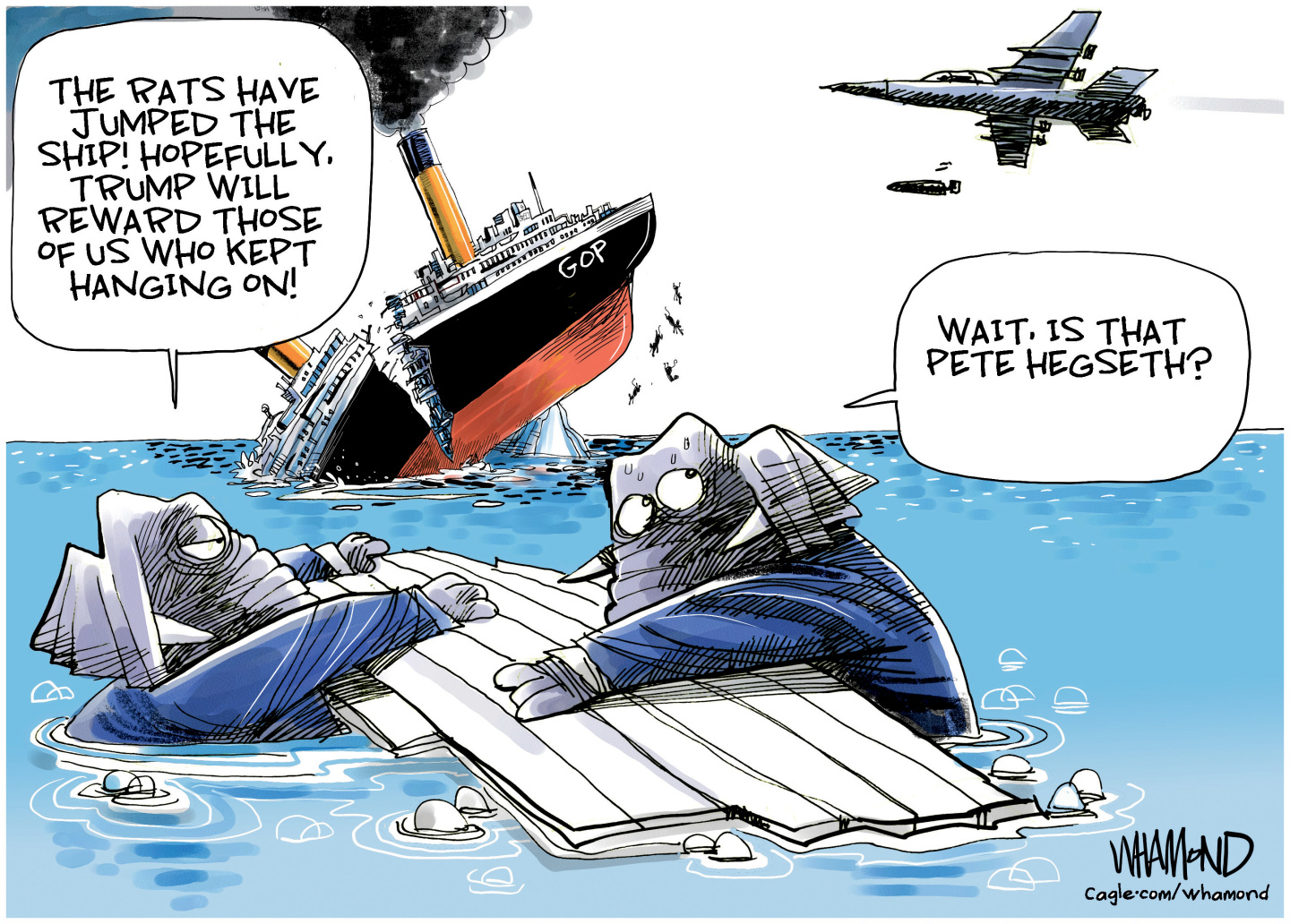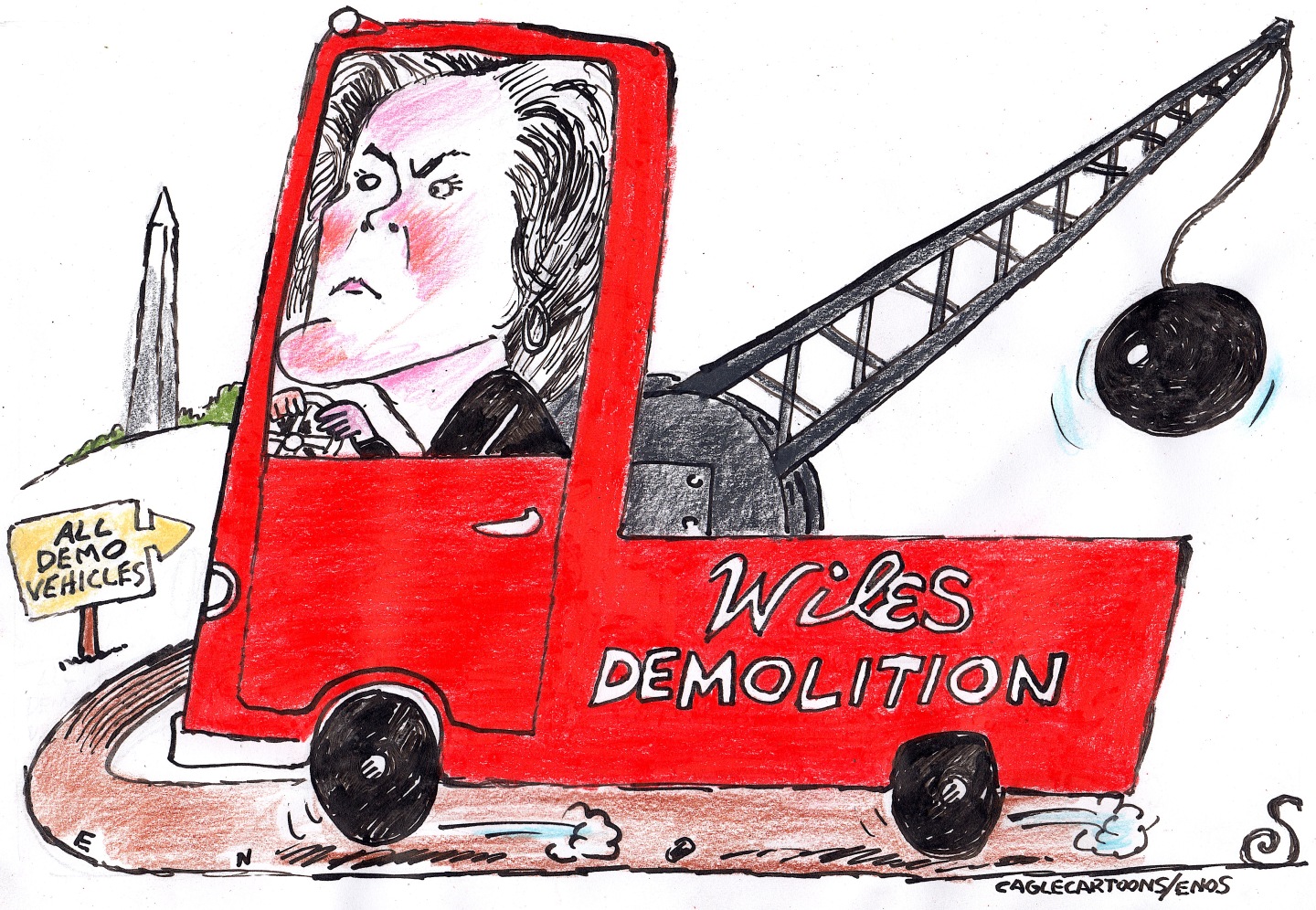Defining the right to bear arms
The Supreme Court has agreed to wade into the debate over gun control, said The New York Times, but the language of the Second Amendment clearly says that individuals don't have an unqualified right to bear arms. There's no doubt the Constitution says Ame
What happened
The Supreme Court on Tuesday said it would hear a challenge to Washington, D.C.’s, handgun ban—one of the strictest in the nation. The justices will have the opportunity to decide exactly what the Second Amendment means, and whether everyone—and not just members of a state militia—has the right to bear arms. (The Atanta Journal-Constitution)
What the commentators said
The Week
Escape your echo chamber. Get the facts behind the news, plus analysis from multiple perspectives.

Sign up for The Week's Free Newsletters
From our morning news briefing to a weekly Good News Newsletter, get the best of The Week delivered directly to your inbox.
From our morning news briefing to a weekly Good News Newsletter, get the best of The Week delivered directly to your inbox.
“A lot has changed since the nation’s founding, when people kept muskets to be ready for militia service,” said The New York Times in an editorial (free registration). But the language of the Constitution hasn’t budged, and the Second Amendment says Americans have a right to bear arms because of the need for “a well regulated militia.” Let’s hope the court can “rise above the hard-right ideology of some justices,” and stick to what the Second Amendment actually says.
“There is no longer any doubt that the founders meant it to affirm an individual right to keep and bear arms,” said Timothy Wheeler in National Review Online. The Second Amendment is about guaranteeing Americans the “right to self-defense.” In a nation where criminals have high-quality handguns, there’s simply no “credible” argument to deny Americans this “most natural of rights.”
This might be a different matter if Washington’s “outright” ban on all useable guns had “saved any lives,” said The Washington Times in an editorial. But “the 1976 ban started no trend in the homicide rate, and it did nothing to calm the drug wars that began a decade later and continue to this day.”
A free daily email with the biggest news stories of the day – and the best features from TheWeek.com
-
 Political cartoons for December 20
Political cartoons for December 20Cartoons Saturday’s political cartoons include drowning rats, the ACA, and more
-
 5 fairly vain cartoons about Vanity Fair’s interviews with Susie Wiles
5 fairly vain cartoons about Vanity Fair’s interviews with Susie WilesCartoon Artists take on demolition derby, alcoholic personality, and more
-
 Joanna Trollope: novelist who had a No. 1 bestseller with The Rector’s Wife
Joanna Trollope: novelist who had a No. 1 bestseller with The Rector’s WifeIn the Spotlight Trollope found fame with intelligent novels about the dramas and dilemmas of modern women
-
 Has Zohran Mamdani shown the Democrats how to win again?
Has Zohran Mamdani shown the Democrats how to win again?Today’s Big Question New York City mayoral election touted as victory for left-wing populists but moderate centrist wins elsewhere present more complex path for Democratic Party
-
 Millions turn out for anti-Trump ‘No Kings’ rallies
Millions turn out for anti-Trump ‘No Kings’ ralliesSpeed Read An estimated 7 million people participated, 2 million more than at the first ‘No Kings’ protest in June
-
 Ghislaine Maxwell: angling for a Trump pardon
Ghislaine Maxwell: angling for a Trump pardonTalking Point Convicted sex trafficker's testimony could shed new light on president's links to Jeffrey Epstein
-
 The last words and final moments of 40 presidents
The last words and final moments of 40 presidentsThe Explainer Some are eloquent quotes worthy of the holders of the highest office in the nation, and others... aren't
-
 The JFK files: the truth at last?
The JFK files: the truth at last?In The Spotlight More than 64,000 previously classified documents relating the 1963 assassination of John F. Kennedy have been released by the Trump administration
-
 'Seriously, not literally': how should the world take Donald Trump?
'Seriously, not literally': how should the world take Donald Trump?Today's big question White House rhetoric and reality look likely to become increasingly blurred
-
 Will Trump's 'madman' strategy pay off?
Will Trump's 'madman' strategy pay off?Today's Big Question Incoming US president likes to seem unpredictable but, this time round, world leaders could be wise to his playbook
-
 Democrats vs. Republicans: who are US billionaires backing?
Democrats vs. Republicans: who are US billionaires backing?The Explainer Younger tech titans join 'boys' club throwing money and support' behind President Trump, while older plutocrats quietly rebuke new administration